This issue gathers a fall collection of topics ranging from the latest addition (and latest seasonal colors) on the National Mall to two museums that spotlight the heritage and influence of Native Americans to a pair of French couturiers whose fashion collections made history.
They're among the offerings designed to make sure you continue to enjoy what you've come to value from Smithsonian Associates: programs and experiences that are entertaining, informative, eclectic, and insightful.
Opening the Door to the Future
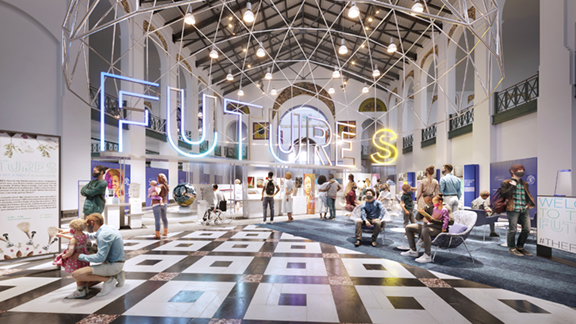 Interior rendering by the Rockwell Group
Interior rendering by the Rockwell Group
The long-awaited transformation of the historic Arts and Industries Building on the National Mall becomes a reality this weekend with the debut of FUTURES, a signature element of the Smithsonian's 175th anniversary celebration. The spectacular building-wide exploration of the future combines science, art, technology, and history to explore not just one future, but many possible futures on the horizon.
The opening festival, FUTURES Remixed, runs Friday, November 19 through Sunday the 21st. Its mix of offerings include a world-premiere livestreamed tour with Bill Nye; an Unexpected Conversations virtual event with big thinkers from worlds of art, science, music, and culture (including Smithsonian Secretary Lonnie Bunch and actor, author, and White House appointee Kal Penn; a Call and Response Concert in the Haupt Garden exploring the future of music inspired by Washington's Go-Go scene; and a Sunday FUTURES Family Day for the youngest future-makers. See the complete lineup of events and guests and register here (tickets are recommended).
Get a Glimpse of the FUTURES
Seasonal Splendors
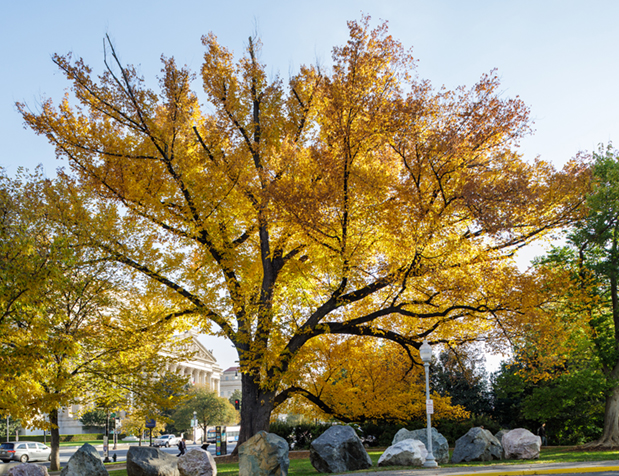 At more than 170 years old, this American elm (Ulmus americana) on the National Museum of Natural History's landscape is the oldest tree in the Smithsonian's collection. (Photo courtesy Smithsonian Gardens)
At more than 170 years old, this American elm (Ulmus americana) on the National Museum of Natural History's landscape is the oldest tree in the Smithsonian's collection. (Photo courtesy Smithsonian Gardens)
If you're planning to visit the reimagined Arts and Industries building soon, be sure to leave time to take in the stunning fall colors in all corners of the National Mall. Or you can take a virtual stroll through some of the most beautiful spots courtesy of Smithsonian Gardens. A photographic tour surveys the rich autumn landscapes in locations including the Enid Haupt Garden, the Pollinator Garden, the Freer Gallery, National Museum of American History, and the National Arboretum.
Are you a gardener who prefers pots over plots? Don't miss two Smithsonian Associates Streaming programs with orchid expert Barbara Schmidt, president of the Orchid Society of America. She leads a hands-on workshop on Sunday, November 21 in which participants create an orchid centerpiece that's perfect for the holiday season. On Tuesday, November 23 she leads a tour of several of the most exotic and beautiful orchid collections in the United States. In virtual visits, an orchid specialist from each botanical garden shares what makes their collection unique and highlights some of its rarest orchids.
Orchids for the Holidays
Orchid Gardens Across the US
Native States, Native Stories
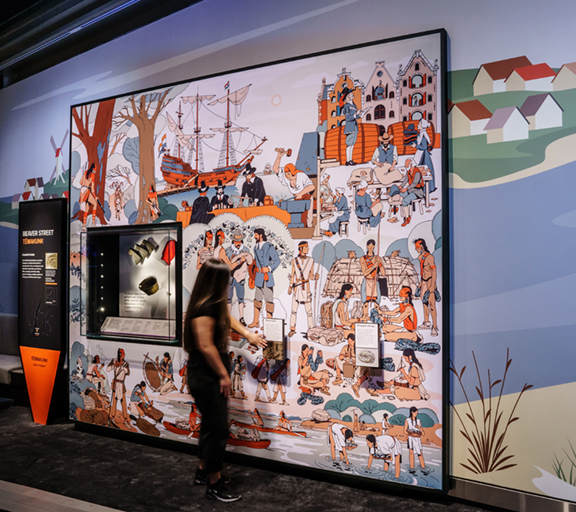 Visitor at the Native New York exhibition (Image courtesy C&G Partners)
Visitor at the Native New York exhibition (Image courtesy C&G Partners)
Oklahoma City's new First Americans Museum encompasses the collective histories of 39 distinctive First American Nations in the state today. Three decades in the planning, the museum's architectural and design teams drew on those histories as they envisioned how the new structure, its collections, and its landscape could incorporate meaningful reflections of the state's wide-ranging spiritual and tribal traditions. Though the process was not an easy one, the finished museum-characterized by themes of circular and spiral shapes and a deep connection to nature-powerfully accomplished the goal. Smithsonian magazine reports on the museum's development.
What does it mean to be a native New Yorker? The Smithsonian's National Museum of the American Indian's newest exhibition wants to change how visitors see Native people and New York State. Native New York, opened just ahead of Native American Heritage Month at NMAI's George Gustav Heye Center in New York City, takes visitors on a journey to 12 significant places in New York, stretching from the shores of Long Island through Manhattan to Niagara Falls. The exhibition uses objects, media, interactives, and narrative comics to demonstrate how New York is and always has been a Native place.
"Because Native American histories and cultures are still affected by inaccuracy and stereotyping, it is critical that the museum not only offers more accurate stories of the past, but also shows how those histories impact contemporary life and Native people today," says David Penney, the museum's associate director for museum scholarship, exhibitions, and public engagement. Penney curated the exhibition with Gabrielle Tayac (Piscataway), whose years of consultations with Native communities provided the foundation for the exhibition's scholarship.
Learn About the Exhibition
Insights Into Attica
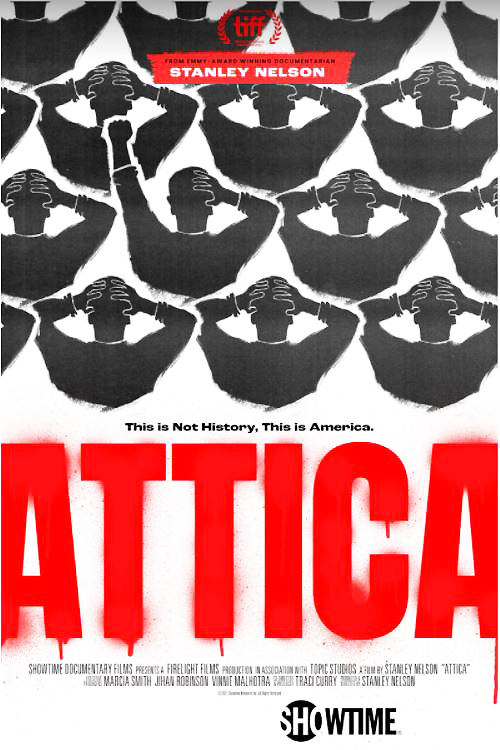
The new documentary Attica details the five-day prison rebellion that transpired in the fall of 1971 in upstate New York and still stands as the largest and deadliest the country has ever witnessed. Beyond recounting of the five days of rebellion, the film (now streaming on Showtime), offers a broader understanding of the Attica tragedy in the crosscurrents of politics, race, power, and punishment during the early 1970s.
Attica explores the tensions between a young, radicalized population of mostly Black and Latino inmates and correctional officers from a predominately white company town, where the prison was the primary employer for generations of families. Director Stanley Nelson and co-director Traci Curry examine the inmates' demands for recognition of their humanity at the culmination of a moment where racial-justice activists embraced prisoner rights as an extension of their fight for civil rights.
Smithsonian Associates members can now stream a free recorded interview with Nelson and Curry led by Christopher Wilson, executive director of the History Film Forum at the National Museum of American History. They offer insights into the making of this timely feature-length film and the enduring impact of the Attica rebellion half a century later.
Stream the Interview
In an Extraordinary Fashion
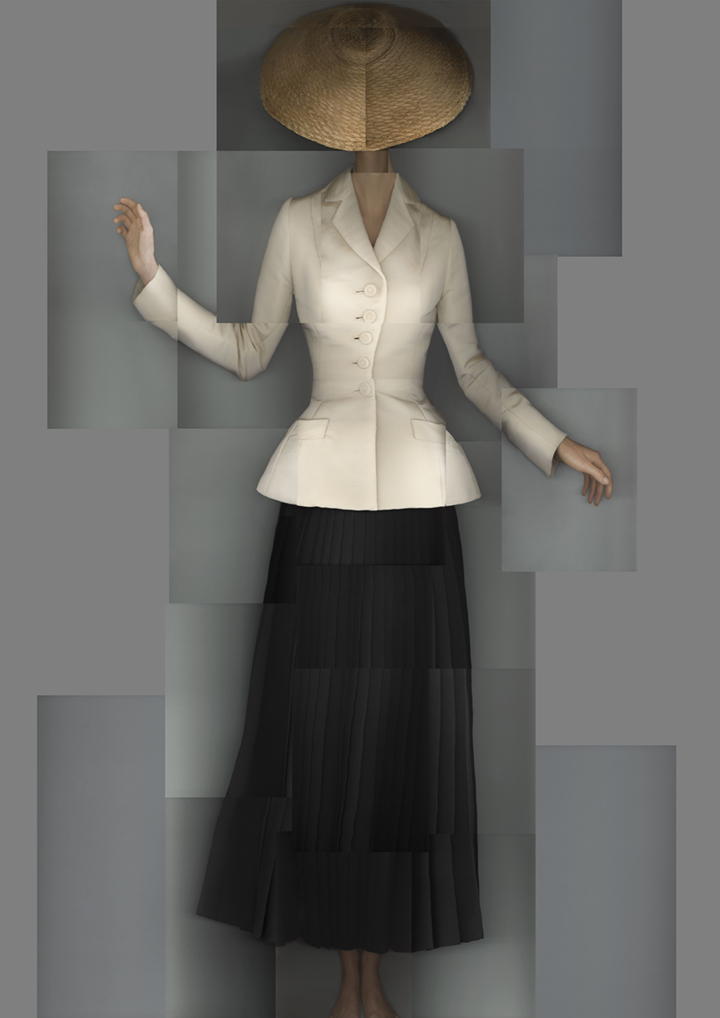 Christian Dior (French, 1905–1957). Bar suit, afternoon ensemble with an ecru natural shantung jacket and black pleated wool crepe skirt. Haute Couture Spring–Summer 1947, Corolle line. Dior Heritage collection, Paris. © Katerina Jebb
Christian Dior (French, 1905–1957). Bar suit, afternoon ensemble with an ecru natural shantung jacket and black pleated wool crepe skirt. Haute Couture Spring–Summer 1947, Corolle line. Dior Heritage collection, Paris. © Katerina Jebb
The New York premiere of the exhibition Christian Dior: Designer of Dreams at the Brooklyn Museum traces the groundbreaking history and legacy of the House of Dior. It brings to life Dior's many sources of inspiration-from the splendor of flowers and other natural forms to classical and contemporary art.
With objects drawn primarily from the Dior archives, the exhibition includes a vast array of over 200 garments as well as photographs, archival videos, sketches, vintage perfume elements, accessories, and works from the museum's collection. The haute couture on view exemplifies many of the French couturier's fabled silhouettes, including the "New Look," which debuted in 1947.
Coco Chanel's postwar designs were the antithesis of Dior's luxurious bounty of expansive skirts with tiny wasp waists. Her signature suits were about ease of movement with a classic rectangular silhouette and extraordinary hidden details that made them exceedingly comfortable to wear.
In a Monday, January 10 Smithsonian Associates Streaming program design historian Elizabeth Lay looks at the seeds of each style, how the materials were sourced, how they were promoted, and who bought these marvelous designs. She shares fashion photography from the 1950s plus behind-the-scenes snapshots and gives voice to each couturière's ideas. She also examines the minute details of haute couture that set these fashions apart from the ordinary.
Register for the Program